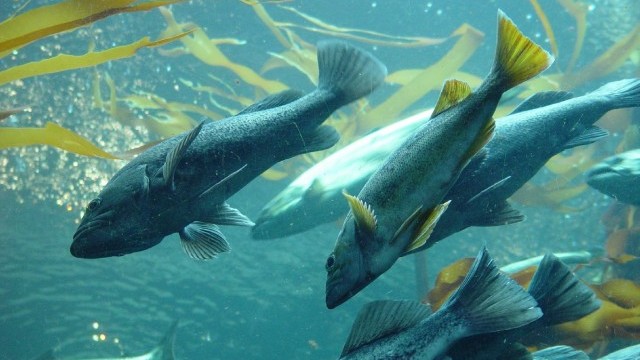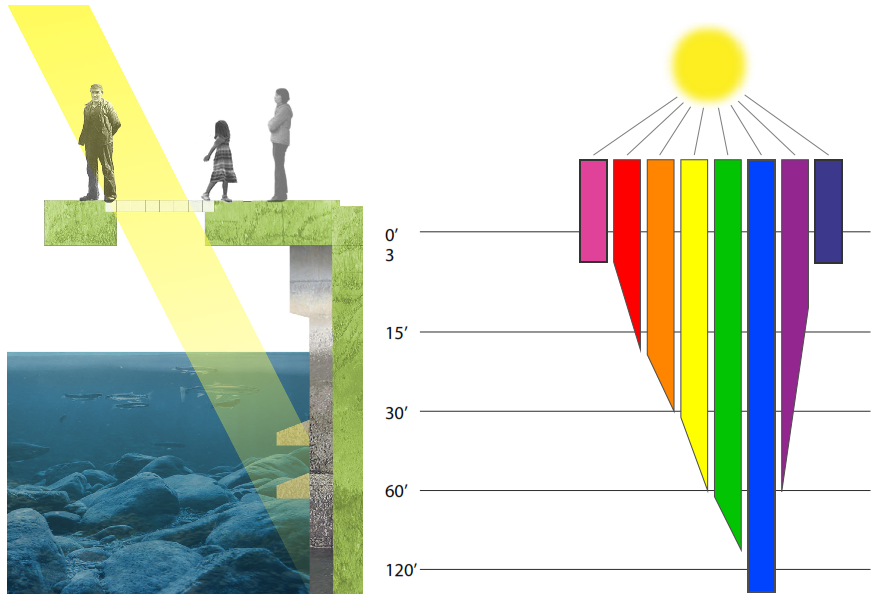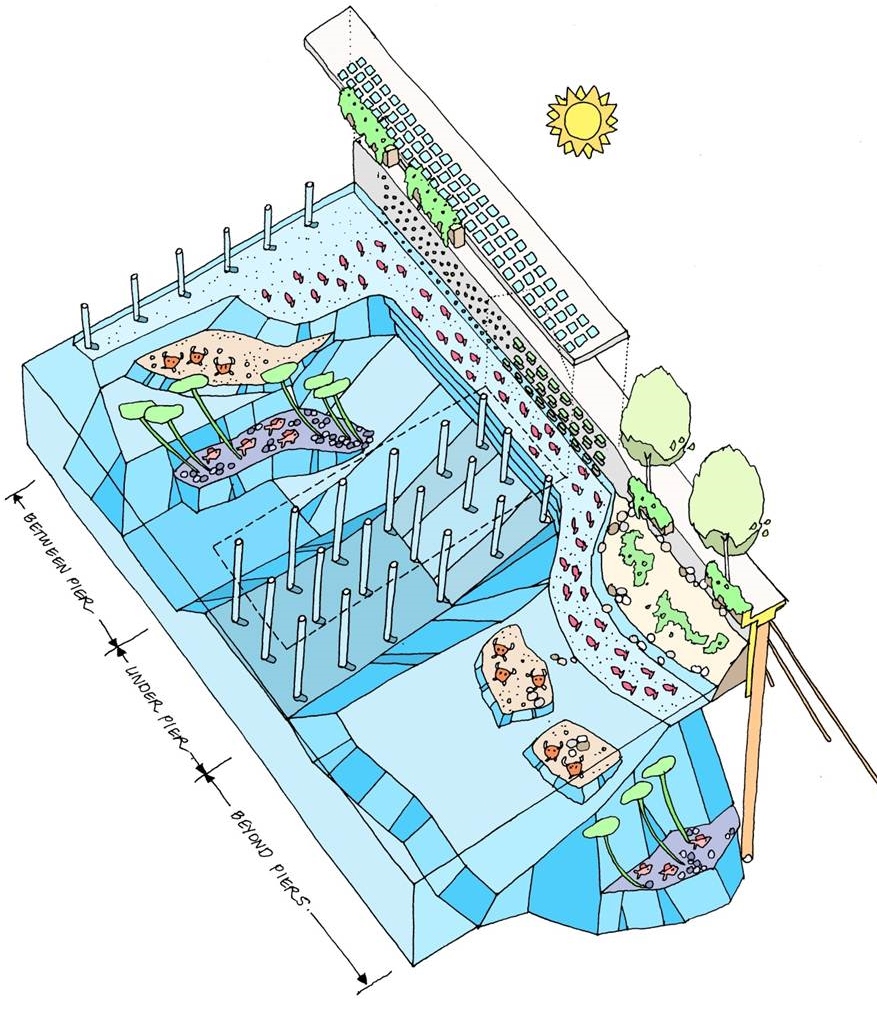
Salmon are keystone species that deliver vital nutrients to the soil and support the local economy. These fish have been a cultural icon since the earliest days of human settlement in the Pacific Northwest. But the salmon’s preservation has not always been a priority.
In the early 1900s, 68 percent of Seattle’s shoreline habitat was destroyed by the construction of the Elliott Bay Seawall. It was intended to prevent shore erosion and enable waterfront development, but the seawall also decimated salmon populations, reducing them by 90 percent.
Now, a major urban reconstruction project, including the replacement of the seawall, offers hope for the salmon by creating a more hospitable migratory corridor.

Right: Some wavelengths (colors) of light penetrate water deeper than others.
“We needed to replace the seawall. It’s the face of our waterfront,” says Jessica Murphy, project manager of Waterfront Seattle. “This is a unique opportunity to replace habitat that was lost.”
Murphy coordinates a team of marine scientists and engineers in Seattle developing an innovative construction plan to address three main problems that the migrating salmon currently face.
